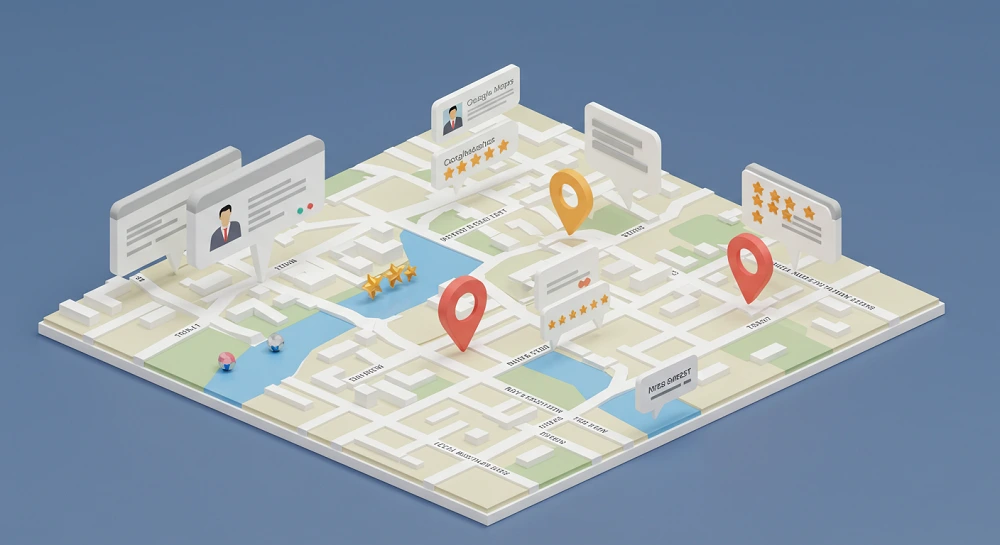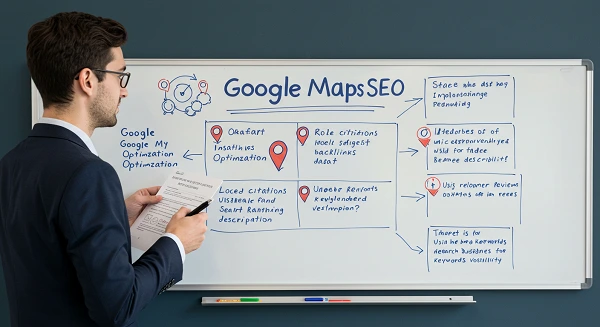
Google Maps SEO: How to Rank Higher and Drive Local Traffic in 2025
Have you ever searched for a nearby coffee shop, hair salon, or auto repair service on your phone — and chosen the one that appeared right at the top of Google Maps?
You’re not alone.
In fact, over 86% of people use Google Maps to find local businesses, and 76% of them visit a business within 24 hours. This simple behavior shift is quietly revolutionizing how customers find and choose services near them — and if you’re not showing up on that map, you’re losing business.
That’s where Google Maps SEO comes in.
As someone who’s spent more than a decade helping businesses make their content not just findable but genuinely useful, I can tell you this: ranking on Google Maps is one of the most powerful, cost-effective local SEO tactics available today.
Let’s break down what it is, why it matters, and exactly how you can get your business to the top of the map results — with steps that are practical, easy to follow, and rooted in what really works in 2025.
What Is Google Maps SEO?
Google Maps SEO is the process of optimizing your business to appear in Google’s local pack — those top 3 results that show up when someone searches for a business “near me” or in a specific location.
Think:
“Plumber in Bondi”
“Best tacos near Surry Hills”
“Emergency dentist Sydney”
If your business isn’t in the top 3 results in that map box, you’re likely missing out on tons of high-intent, ready-to-convert customers.
Quick anecdote:
A local florist in Sydney we once worked with wasn’t showing up at all in Maps results — despite being in a central location. After we optimized their Google Business Profile and built a few citations, their store jumped into the top 3 for “flower delivery Sydney CBD” within six weeks. Their bookings? Doubled.
Why Google Maps SEO Still Matters in 2025
In 2025, location-based search is only becoming more important. With Google’s AI-driven updates and the rising dominance of mobile and voice search, local intent is everywhere.
Here’s what we know:
- 97% of people learn more about a local business online than anywhere else
- 46% of all Google searches are looking for local information
- “Near me” searches have increased by over 200% in the past few years, especially for services like medical clinics, mechanics, and home repairs
For local business owners, this is a huge opportunity — if you know how to play the game.
How the Google Maps Algorithm Works (2025 Update)
Google doesn’t reveal its full algorithm (no surprises there), but based on studies like the Whitespark Local Ranking Factors report, we know it comes down to three core signals:
1. Relevance
How well your business matches what someone is searching for.
2. Distance
How far your business is from the person doing the search.
3. Prominence
How well-known and reputable your business is online (think reviews, backlinks, mentions, etc.)
Pro Tip: You can’t control a user’s location, but you can influence relevance and prominence — which is where SEO magic happens.
Step-by-Step Guide to Rank Higher on Google Maps
Let’s get practical. Here’s how to improve your visibility in the local map pack.
1. Claim and Optimize Your Google Business Profile
This is your starting point. If you haven’t claimed your listing yet, head here and do it. Then:
- Add your correct business name, address, and phone number (this must match your website — more on that later)
- Choose the right primary category (be specific!)
- Write a keyword-optimized, natural-sounding business description
- Add your hours, website, and service areas
Keep everything accurate and up to date — Google rewards active profiles.
2. Consistency Is King: Nail Your NAP (Name, Address, Phone Number)
Make sure your NAP details are identical everywhere online — your website, directories, social media pages, and especially across major local listings like Yelp, Bing Places, Apple Maps, and Yellow Pages.
Even small discrepancies (like “Street” vs. “St.”) can confuse search engines.
3. Collect Real, High-Quality Reviews (and Respond!)
This is a big one.
Reviews are one of the top ranking signals for local SEO. Encourage happy customers to leave Google reviews — and respond to every one, even the not-so-happy ones. Google favors engaged businesses.
“We started asking customers to review us after every job,” says Daniel, a handyman in Parramatta. “Not only did our Maps ranking go up, but we started getting more calls from people who said they chose us because of the feedback.”

4. Use Local Keywords in Your Profile and Website
Don’t overdo it, but sprinkle location-specific keywords throughout your:
- Business description
- Service lists
- Website content
- Blog posts
For example: “emergency plumbing in Marrickville” or “family dentist near Randwick.”
5. Add High-Quality Photos and Videos
Photos help build trust. Google even says businesses with photos get:
- 42% more direction requests
- 35% more click-throughs to websites
Upload pictures of your team, your office, your work in action — and update them regularly.
6. Leverage Google Posts and Q&A
Google Posts let you share updates, promos, events, and blog content directly on your profile.
Answer common questions in the Q&A section proactively — it helps with relevance and user trust.
Advanced Tactics for 2025 (That Most Competitors Still Overlook)
Want to get ahead of the pack? Try these:
Use Schema Markup
Adding LocalBusiness schema to your website helps Google understand what your business does and where it’s located.
Build Local Backlinks
Get links from local newspapers, bloggers, business directories, or industry-specific websites in your area.
Use UTM Tracking for Google Maps Clicks
Add UTM parameters to your profile’s website link to see exactly how much traffic you’re getting from Google Maps.
Monitor Competitors with Tools Like Local Falcon
Track where you rank on the map from different suburbs — this helps you see where to focus your optimization.
Common Mistakes That Hurt Your Google Maps SEO
Avoid these at all costs:
- Keyword stuffing in your business name (e.g., “Joe’s Plumbing Best Sydney Emergency Plumber” — don’t do this!)
- Inconsistent NAP info
- Neglecting to respond to reviews
- Not updating business hours or info
- Ignoring photos or using stock images
Case Study: How One Local Business Tripled Calls in 90 Days
We worked with a small mobile dog grooming service in Western Sydney. They weren’t ranking at all, despite having great reviews and happy customers.
After:
- Optimizing their Google Business Profile
- Building 25 local citations
- Embedding a map on their homepage
- Adding location keywords to their website content
…they moved from page 3 to the top of the map pack for “dog grooming Penrith” — and their call volume more than tripled in 3 months.
How to Track Your Google Maps SEO Performance
Tracking is crucial. Use these tools:
- Google Business Profile Insights: Check views, searches, calls, and direction requests
- Google Analytics (with UTM tags): Understand how much traffic comes from your profile
- Local Rank Trackers: BrightLocal, Whitespark, Local Falcon

Typically 4–8 weeks, depending on competition, profile completeness, and review velocity.
You need to have a service area or real business location — virtual offices won’t cut it.
Google Ads can get you a sponsored spot, but they don’t influence organic map rankings.
Absolutely not. It’s against Google’s guidelines and can get your profile suspended.
Final Thoughts: Why Google Maps SEO Is a Must — and Where Pioneer SEO Agency Can Help
Google Maps SEO isn’t just about visibility — it’s about trust, accessibility, and showing up when it matters most: when people nearby are ready to buy, call, or visit.
At Pioneer SEO Agency, we specialize in helping businesses like yours dominate local search with smart, ethical, and effective SEO strategies. Whether you need help with Google Business Profile optimization, local link building, or just want to know where your online presence stands — we’re here to help you rank, grow, and connect with more local customers.
Want to see where your business stands? Get in touch with us today for a free local SEO audit.
